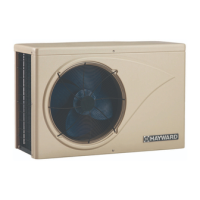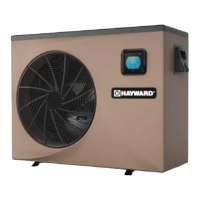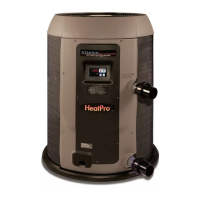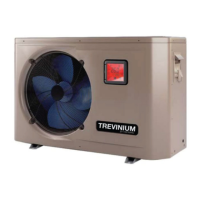7
3. INSTALLATION AND CONNECTION
3.4 Swimming Pool Heat Pumps: Plumbing
The titanium heat exchanger requires no special plumbing except bypass (please set the ow
rate according to the nameplate). The water pressure drop is less than 1.5psi (10KPa) at maxi-
mum ow rate. Since there are no residual heat or ame temperatures, the unit does not need
copper heat sink piping. PVC pipes can be run straight into the unit.
Location: connect the unit in the pool pump discharge (return) line downstream of all lter and
pool pumps, and upstream of any chlorinators, ozonators or chemical pumps. Install the rubber
feet onto the bottom of the unit.
*You will need to use 1½” male PVC adapter to connect to the heat pump.
Consider adding a quick coupler tting at the unit inlet and outlet to allow easy draining of the
unit for winterizing and to provide easier access should servicing be required (coupler supplied
with unit).
Condensation: since the heat pump cools the air down about
4-5ºC water may condense on
the ns of the horseshoe shaped evaporator. If the relative humidity is
very high, this could be as much as several gallons/litres an hour. Verify the unit is level so that
water will run down the ns into the basepan and drain out through the barbed plastic conden-
sation drain tted on the side of the basepan. This tting is designed to accept 3/4” clear vinyl
tubing and run to a suitable drain. It is easy to mistake the condensation for a water leak inside
the unit.
NB: a quick way to verify that the water is condensation is to shut off the unit and keep the
pool pump running. If the water stops running out of the basepan, it is condensation. An EVEN
QUICKER WAY IS TO TEST THE DRAIN WATER FOR CHLORINE - if there is no chlorine pres-
ent, then it’s condensation.

